Don’t be put off by the name — the Dead Sea, a body of water located in the Jordan Rift Valley bordered by Israel to the east and Jordan to the west, is actually one of the most beautiful locations on the entire planet. It’s the second-saltiest significant body of water in the world behind Antarctica’s Don Juan Pond, and the high level of sodium means that practically no life can survive in it, including fish (but if you had a microscope, you’d find plenty of seaweed and bacteria).
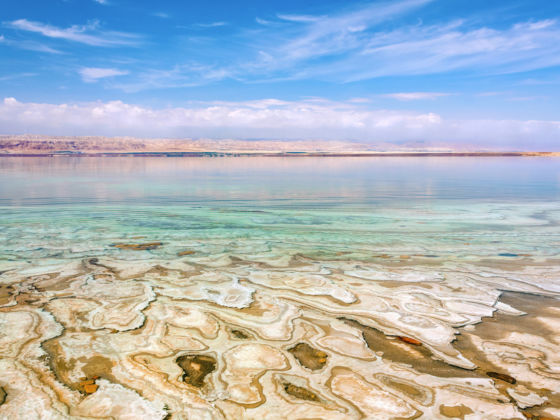
How to Experience the Dead Sea From the Crowd-Free Jordan Side
Because of its position as the endpoint for several local rivers, the ensuing water has nowhere to go, so it sits until much of it evaporates, leaving behind a berth of minerals. The resulting water is 10 times saltier than the ocean. This salinated water is ideal for swimming, the beaches are great sunbathing spots, and the high mineral content hosts a number of health benefits. While most people consider the Dead Sea to be an Israeli destination, the Jordanian side is equally spectacular — but with far fewer crowds than its highly visited neighbor. You also cut down on driving time to get there, avoiding most of the tourist traffic coming from the other direction. Here’s how to make your Dead Sea adventure in Jordan happen, and everything you need to know to make the trip one to remember.
When to go
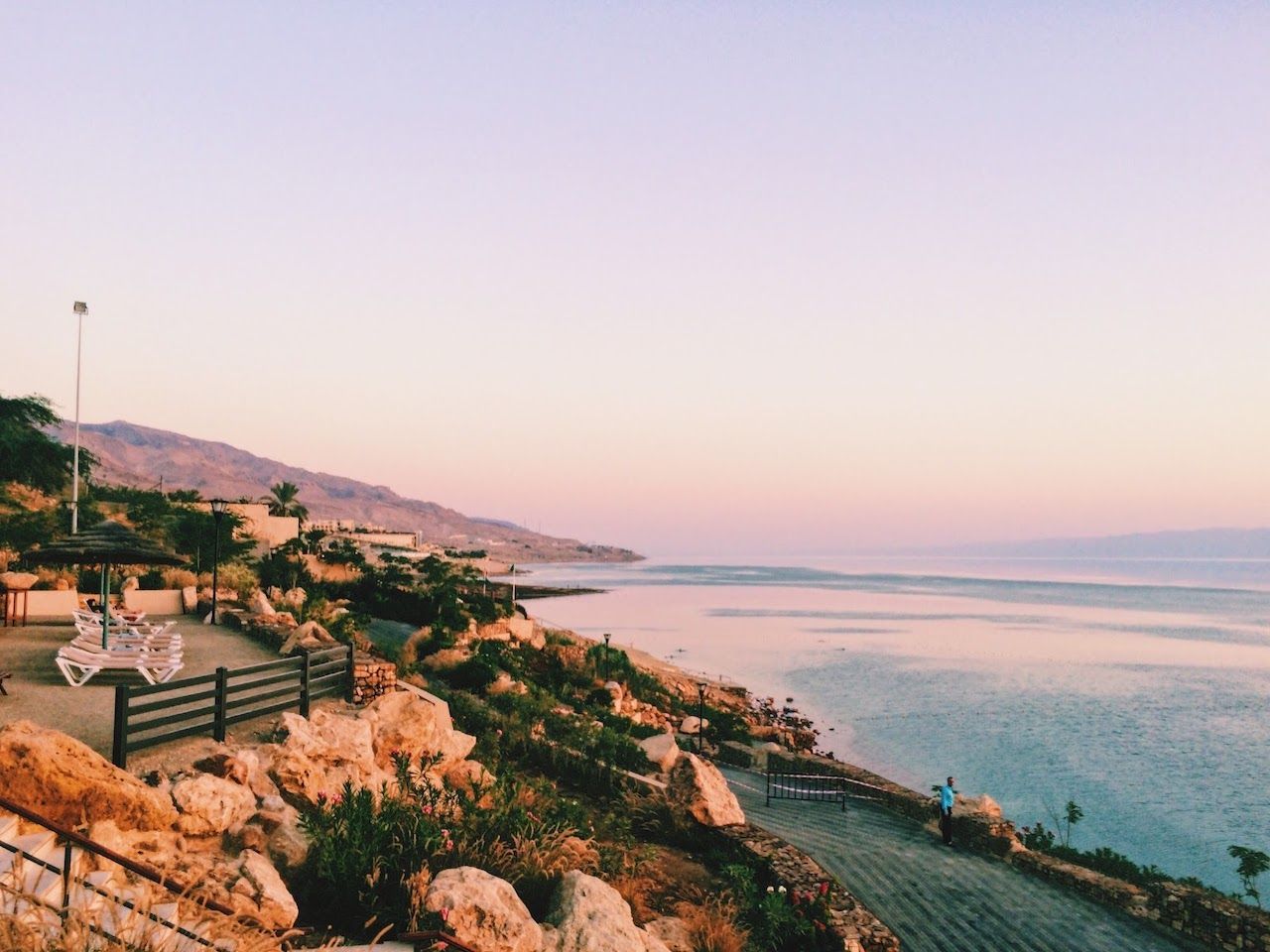
Photo: Jennifer Lundt
The Dead Sea receives a meager three inches of rainfall per year. As a result, the skies are nearly always clear and sunny, ideal for swimming and sunbathing. The lake itself lies 300 meters (984 feet) below sea level, making it the lowest foot-accessible place on Earth. The low elevation atmosphere blocks out additional harmful UV rays, actually making it safer to be in the sun than many higher elevation spots. Because of the lake’s extremely low elevation, winter temperatures are mild, averaging 63°F (17°C) in January at the southern end and 58°F (14°C) at the northern end. It never gets to a freezing temperature, but for ideal swimming and lounging conditions, spring and autumn are the best. Summers are hot but passable — especially if you plan on spending time in the pool at your hotel. You can visit the Dead Sea year round — just prepare to soak up the sun rays in summer and fall months or go for a chiller, cooler vacay in winter. Crowds tend to peak in the early autumn months.
How to get to the Dead Sea from Amman
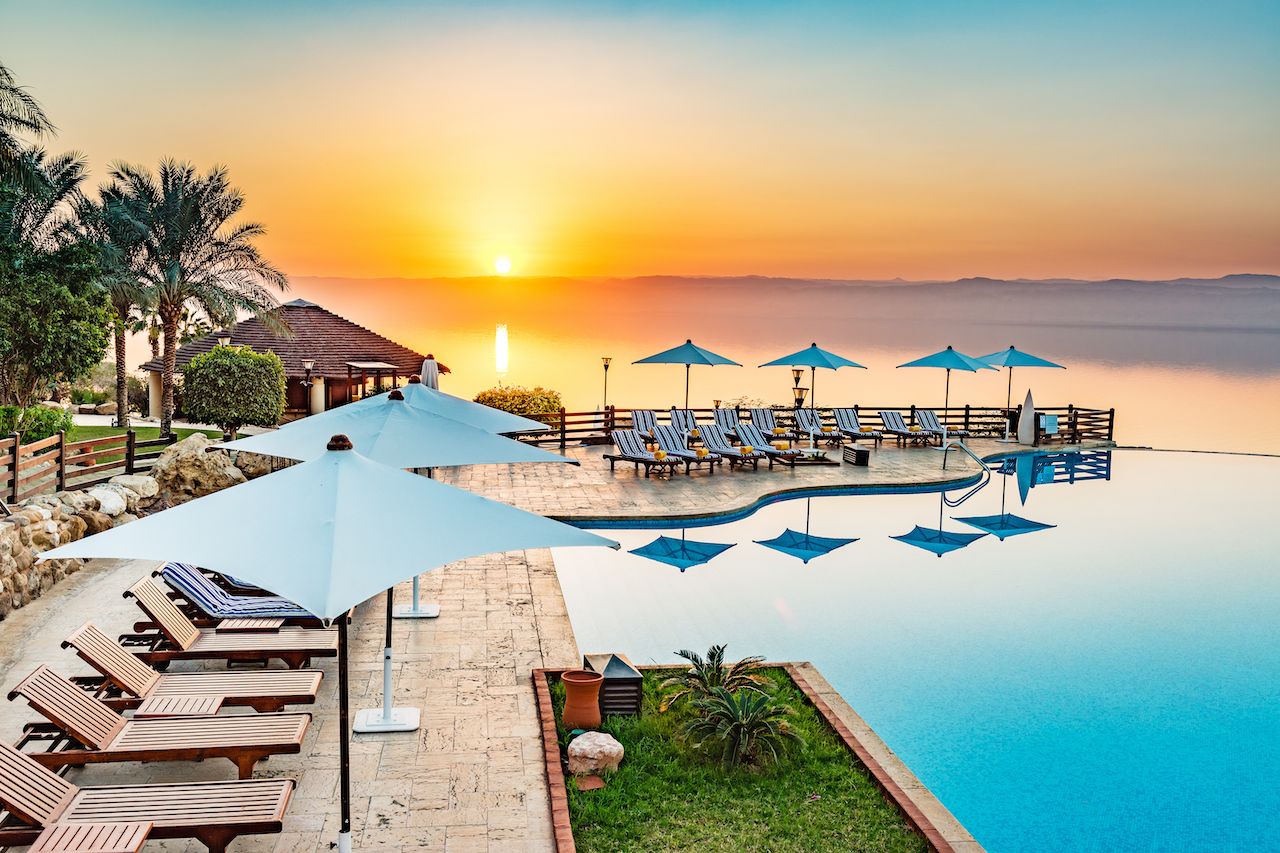
Photo: Richard Yoshida/Shutterstock
The best way to access the Jordanian Dead Sea is to fly into the country’s capital city, Amman. The trip from the city to the sea takes about an hour. Multiple tour operators, including Memphis Tours and Jordan Tours & Travel, offer daily guided trips from Amman to the Dead Sea, eliminating the need to use public transit or even do any actual trip planning.
In stark contrast to the stress and bustle of Amman, nearly everything else falls away once you pull out of town — the skyline, the traffic, the Arabic rap songs pulsating from other vehicles. If you elect to drive yourself, rent a car at Queen Alia International Airport and take Ma’in Street to the Jordan Valley Highway, also called Route 65, and follow signs to Amman Beach. If you’re coming from the city center, drive down Highway 40, which hugs the outskirts of the capital. Take this road until it merges with the Jordan Valley Highway and then turn to head south towards Amman Beach. Either way, you’ll be there in just over an hour. Uber operates in Amman and can drive you along the same routes, offering the views without you having to navigate or rent a car.
If you feel like venturing on a local bus, there are several local buses from Amman on a daily basis. You can catch a bus from the Mujaharin/Muhajireen bus station to Rame for about $1.50. The taxi from Rame to Amman Beach should be under about $5.50. Additionally, there are daily JETT buses straight from Amman. They leave daily at 8:30 AM from outside the Intercontinental Hotel and then from 9:00 AM at the JETT office by 7th Circle. The bus arrives at the Dead Sea at 10:00 AM and arrives back in Amman at 6:00 PM.
If you are staying in a hotel or hostel in Amman, the people working there can certainly help you with questions or set up transportation for you.
Where to stay once you get there
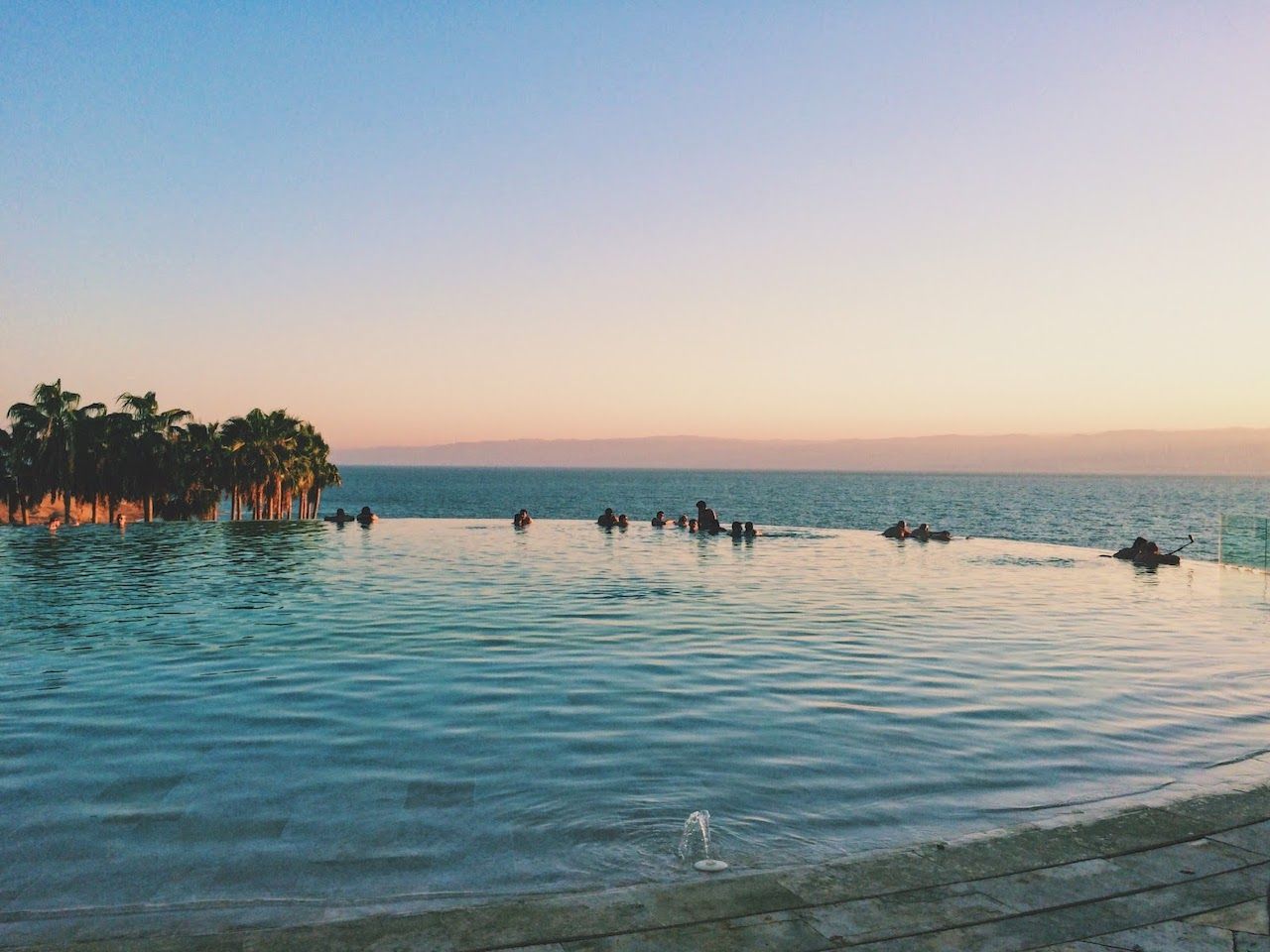
Photo: Jennifer Lundt
At this time, no real budget accommodations exist on the Jordanian side of the Dead Sea. On Booking.com and Airbnb, you can find several available apartments semi-close but not directly on the water. Prices start at about $60 per night and go up from there. On the hotel front, your options are pretty much exclusively five-star resorts. During my time in Jordan, I visited the Dead Sea on four different weekends and spent each in a different hotel — once each in the Movenpick and Kempinski, and once each in the local iterations of the Marriott and Hilton. All four blew me away. Rooms start at about $150 per night, but sea-view rooms, infinity pools, and comfortable lobbies are standard in each option. If you are looking for a place where splurging is worth it, the Dead Sea is certainly an excellent option.
It is worth noting that you have to include additional padding in your budget for food and drink at the hotel. There is tight security to get into most, if not all, hotels in Jordan. They thoroughly check your bags and will confiscate many basic food and drink items as they want you to spend your cash inside, not skirting the prices by bringing your own stuff. Those cocktails in the lounge may be tasty, but they are pricey.
It is also possible to do the Dead Sea on a day trip, due to its close proximity to Amman. There are public beaches available to tourists like Amman Tourist Beach or O Beach, both slightly south of the main hotel strip. You can also buy a day pass for many of the upscale resorts mentioned above. They will charge anywhere from $40 to $85 to use all of their facilities, including private beaches. Using a combination of transportation methods mentioned above, you can go early in the morning and make it back to Amman in time to enjoy an evening drink on Rainbow Street.
What to do at and near the Dead Sea
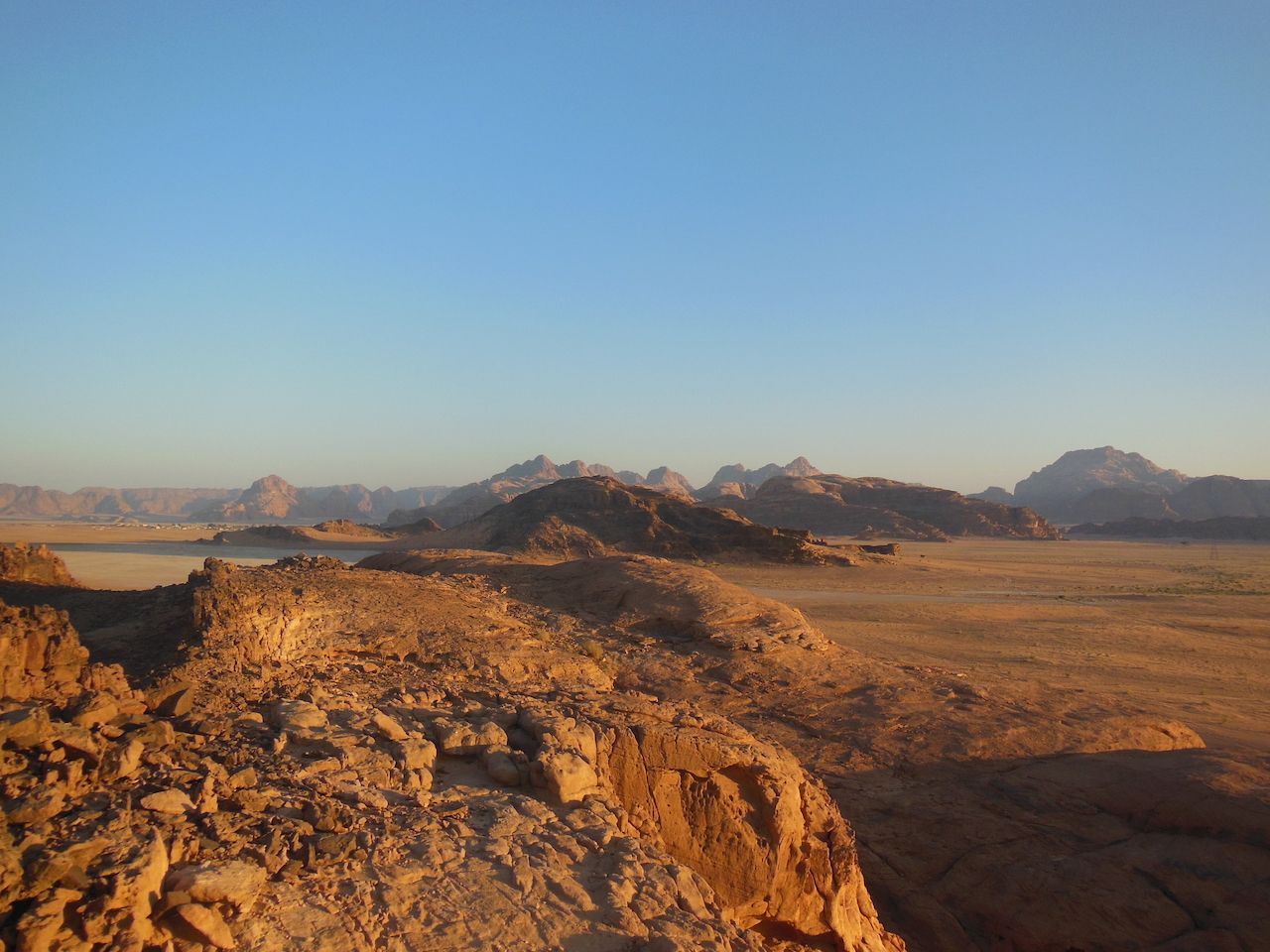
Photo: Corollack/Shutterstock
First off, be sure to float. Bring a book or newspaper and a camera, and enjoy the weightless sensation. Submerging yourself in the water only to feel the powerful force of the salination keep you afloat is a surreal experience. You rise to the surface time after time. It is nearly impossible to sink, though I don’t encourage you to try to challenge nature on this one. Tourists die every year trying to overpower the sea. The result is that their feet float while their heads sink. Definitely not ideal.
An estimated 35 percent of the water in the Dead Sea comprises dissolved minerals, including potassium, sodium, and magnesium. In total, scientists have found 26 different minerals, 12 of which are unique to the area. As a result, mud from the Dead Sea is one of the most healing and therapeutic spa treatments you can get anywhere. On the shores of nearly all of the beaches in the area, you can find buckets of mud and attendants. These dutiful gentlemen can assist you in covering your body, rinsing you off, or retrieving fresh mud from the sea for you. Bonus points if you do this as the sun sets. Stretch out by the palm-lined pool, drink in hand, and feel at peace as the sky changes into dreamy shades.
The famous biblical site of Mount Nebo, with sweeping panoramic views of Israel and Lebanon, is not too far away. Religious or not, this makes a beautiful day trip. Enjoy the walk up to the site and take in the breathtaking views.
For a uniquely adventurous option, visit Wadi Mujib, a beautiful canyon park that runs adjacent to much of the Jordanian Dead Sea coastline. If you are driving along the Trans Jordan highway that hugs the Dead Sea through the country, follow signs that will lead you to this beautiful canyon park. It’s best to go on a professional tour because depending on the season, the water can be fierce and raging.
Additional tips
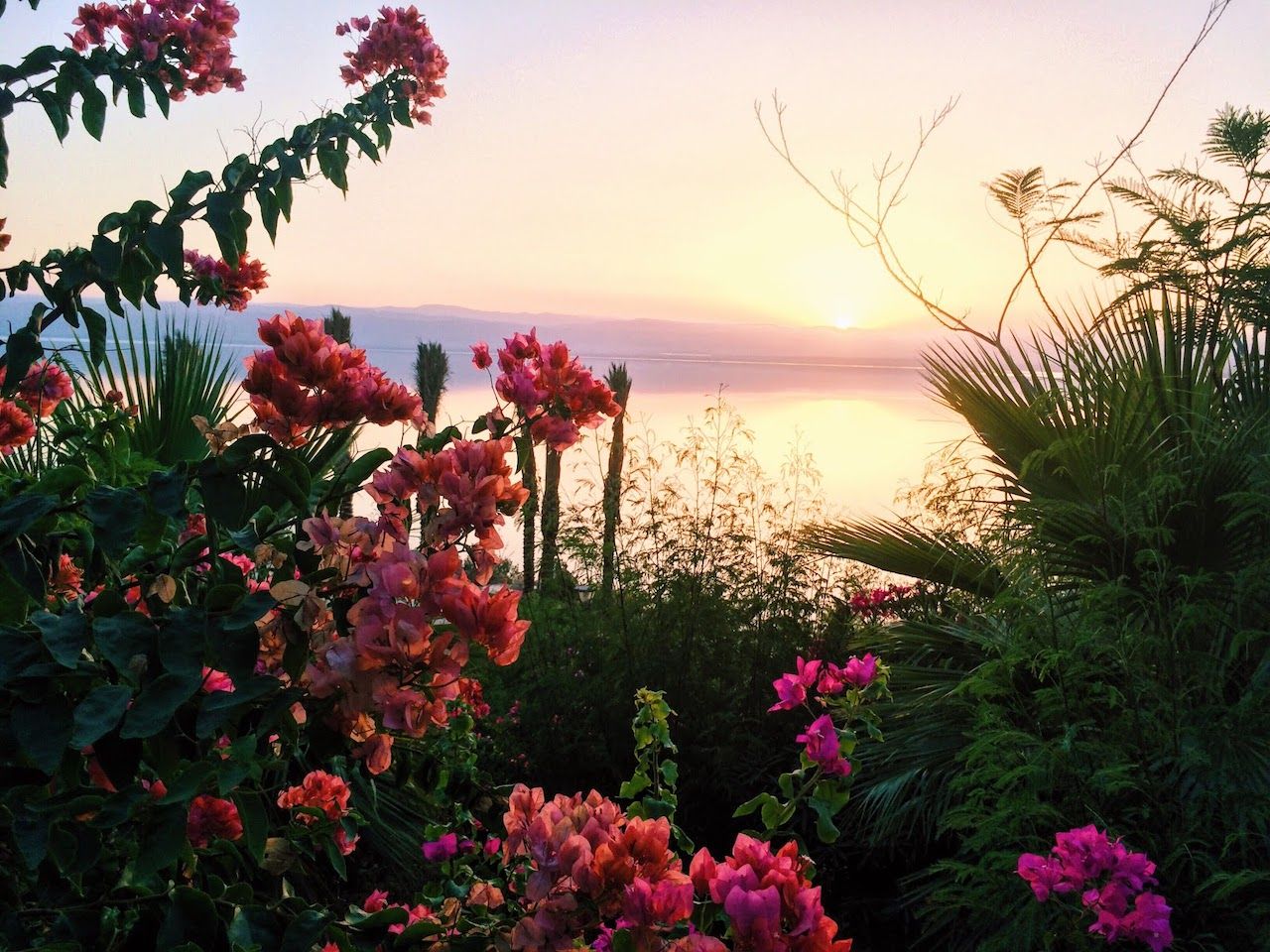
Photo: Jennifer Lundt
If you want a spa treatment, book in advance.
Dead Sea spas are not places where you can merely show up unannounced and expect treatment. The Dead Sea treatments are famous all around the world for their rejuvenating and healing properties, and as a result, eager health hedonists reserve spaces at these fancy spas months in advance. Plan ahead and consider booking your treatment at the same time as you book your travel accommodations.
Wear a dark bathing suit.
Ahem, this one should need no explanation. If you are swimming in the mud with a white bathing suit, it is certainly not the best look for when you get out of the water. Dark blues, browns, and black are the ideal swimsuit colors. As an additional note, resorts here are very modern and accustomed to tourists wearing any variety of bathing suits. No need to worry about modesty if you are staying and swimming, but if you are using the day spa, dress more conservatively.
Do not get the water in your eyes, mouth, or open cuts.
The water on the Dead Sea is known to sting. Do not shave in the few days prior to swimming in the Dead Sea and avoid exposure to open cuts, as the salty water will sting the empty follicles and give you a horrible burn.
Go before it’s too late.
Unfortunately, this destination will not be around forever. Due to evaporation and siphoning water levels, experts estimate the sea will have water only for another 50 years.